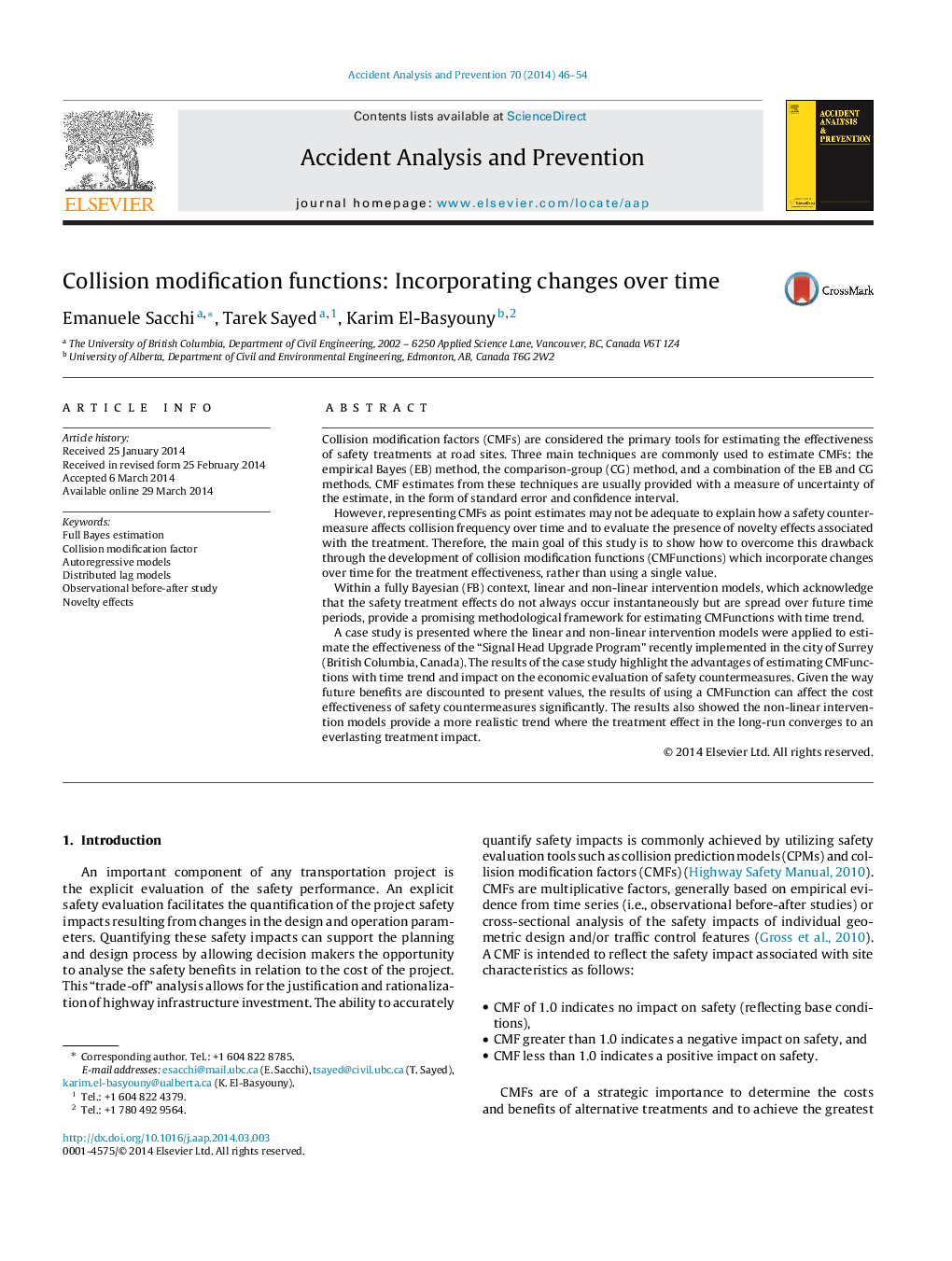| کد مقاله | کد نشریه | سال انتشار | مقاله انگلیسی | نسخه تمام متن |
|---|---|---|---|---|
| 572300 | 1452927 | 2014 | 9 صفحه PDF | دانلود رایگان |
• Collision modification functions can explain how safety countermeasures affect collisions over time.
• Two time-series cross sectional models were considered to develop CMFunctions.
• CMFunctions were developed for the “Signal Head Upgrade Program” implemented in British Columbia (Canada).
• The results for the two methodologies were compared and discussed.
• The non-linear (Koyck) model provided a more realistic trend of the expected treatment impact.
Collision modification factors (CMFs) are considered the primary tools for estimating the effectiveness of safety treatments at road sites. Three main techniques are commonly used to estimate CMFs: the empirical Bayes (EB) method, the comparison-group (CG) method, and a combination of the EB and CG methods. CMF estimates from these techniques are usually provided with a measure of uncertainty of the estimate, in the form of standard error and confidence interval.However, representing CMFs as point estimates may not be adequate to explain how a safety countermeasure affects collision frequency over time and to evaluate the presence of novelty effects associated with the treatment. Therefore, the main goal of this study is to show how to overcome this drawback through the development of collision modification functions (CMFunctions) which incorporate changes over time for the treatment effectiveness, rather than using a single value.Within a fully Bayesian (FB) context, linear and non-linear intervention models, which acknowledge that the safety treatment effects do not always occur instantaneously but are spread over future time periods, provide a promising methodological framework for estimating CMFunctions with time trend.A case study is presented where the linear and non-linear intervention models were applied to estimate the effectiveness of the “Signal Head Upgrade Program” recently implemented in the city of Surrey (British Columbia, Canada). The results of the case study highlight the advantages of estimating CMFunctions with time trend and impact on the economic evaluation of safety countermeasures. Given the way future benefits are discounted to present values, the results of using a CMFunction can affect the cost effectiveness of safety countermeasures significantly. The results also showed the non-linear intervention models provide a more realistic trend where the treatment effect in the long-run converges to an everlasting treatment impact.
Journal: Accident Analysis & Prevention - Volume 70, September 2014, Pages 46–54
